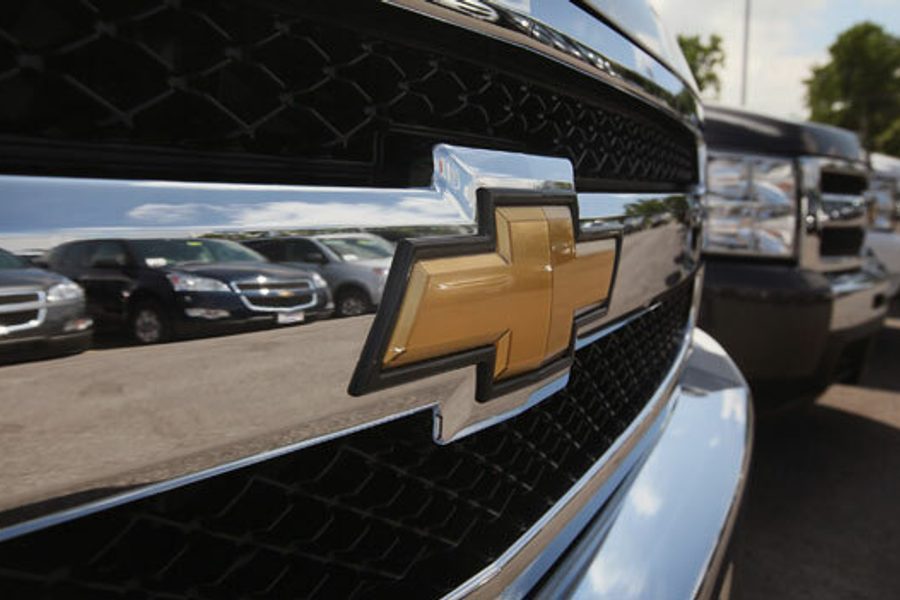
United Auto Workers president shifts union strategy toward collaboration
The tentative contract between the United Auto Workers and General Motors consolidates and expands upon a new model of relations between the union and the Detroit Three auto companies. Unlike the post-World War II auto contracts that influenced labor relations, wages and benefits throughout the corporate U.S. economy, this new model is based on recent experiences of weakness, vulnerability and decline instead of the strength and growth of the CIO organizing surge.
UAW President Bob King, who sees himself — and is seen by many others — as trying to revive Walter Reuther’s social unionism, hopes the new model will lead the union to growth and strength again, this time by cooperating with, more than fighting against, the auto company executives. It’s a risky strategy, facing many pitfalls and internal skeptics, but the militant alternative that would revive Reuther’s bargaining strategy is hardly a sure bet in a globalized industry with a declining union density.
“We went into this agreement looking for jobs, jobs, jobs,” UAW vice president and GM director Joe Ashton said. And the union claims the contract guarantees 6,400 new UAW jobs by re-opening a closed plant in Spring Hill, Tenn., and providing new work for other factories. Some of the jobs, the union says, are being brought back from Mexico. In addition, GM has promised since its bankruptcy to invest $4.6 billion to create an additional 11,800 jobs in the U.S. while expanding its foothold in China.
GM may be enticed to make some of these investments, according to some industry analysts, by the prospect of significantly reducing its total labor cost per employee over the four-year life of the contract.
The new contract, subject to a vote next week by 46,000 UAW members at GM, gives no wage increase to the 96 percent of veteran workers at the first tier of pay, roughly $28 an hour. The more newly hired second-tier workers, now starting at roughly half that rate, will see their wages increase to as much as $19.28 an hour. The increase will reduce the gap between tiers, but does not provide a path for second-tier workers to become part of the first (except for a potential opening for some in 2015).
Although the previous contract limited second-tier workers to 25 percent of the workforce, the union has made exceptions and the new contract, following guidelines after the bankruptcy, sets no limit. Ashton says, “We would love it to be 40 percent. That means our workforce has grown by 40 percent.” But that percentage could also grow if workers near retirement take buy-out packages, which may not be as attractive to workers in a depressed economy.
The UAW says it preserved pension and health benefits, and improved the second-tier health plan.
Over the time of the contract, workers will mainly realize gains through lump-sum payments — such as for signing the contract, education, or an alternative to traditional cost-of-living adjustments — and from an improved profit-sharing plan that pays out fluctuating bonuses depending on company’s performance. King estimates that workers would be guaranteed roughly $12,000 over the contract, plus profit-sharing that could generate $20,000 per worker if GM profits stay at this year’s level.
This is a significant departure from traditional practice, in part because base wages (which also determine future pension payouts) do not rise with inflation or productivity. Also, workers will have less predictable incomes and share cyclical ups and downs. King sees such flexible pay systems as critical to success of the companies.
He also argues that UAW’s attention to the success of its employers will help in organizing the foreign transplant car and truck factories. Touting GM, Ford and Chrysler as having the highest quality and productivity (a slight exaggeration of the three companies’ improvement), King says, “Workers [in non-union plants] see that UAW workers have a large voice in quality, a large voice in health and safety, a large voice in productivity, in ergonomics. When workers see how we have such a big influence on the success of the company, that will have a big impact.”
The traditional union message is that the power of collective action will win workers dignity, protection from abuse, more control over work life, more pay and expanded benefits. Reuther and others were not insensitive to the health of businesses, but they also operated at a time when the economy was more national and U.S. corporations and workers were by far the most productive. Now the challenge for the UAW is greater, partly because of its own past failures to organize, and its path less clear. At least for now there’s a new-model UAW, but the primary test remains the same: How well does it empower workers and help provide from their work some measure of what they need and deserve — not simply how well it serves the needs of employers.
David Moberg, a former senior editor of In These Times, was on staff with the magazine from when it began publishing in 1976 until his passing in July 2022. Before joining In These Times, he completed his work for a Ph.D. in anthropology at the University of Chicago and worked for Newsweek. He received fellowships from the John D. and Catherine T. MacArthur Foundation and the Nation Institute for research on the new global economy.








